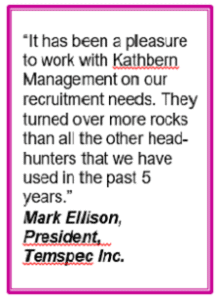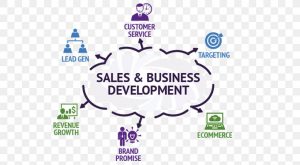There’s never enough time.
So, with what little time there is, you had better be doing the most important things first in order to survive and thrive.
Abraham Maslow, the creator of Maslow’s Hierarchy, set out an order of priorities for individuals which explains that until “lower” needs are satisfied, an individual cannot focus on “higher” needs.
In order, these needs are:
- Physiological
- Safety
- Belongingness
- Self-Esteem
- Self-Actualization
Every individual is at their own particular stage at any point in time and this can change on a daily or even hourly basis, where a lower need will reassert itself for immediate attention. Individuals can also be on a longer-term journey of climbing through the lower level needs to higher ones. Many people will never achieve self-actualization or even self-esteem.
 Businesses are similar, with priorities shifting constantly to address changes that can originate internally or externally. Businesses can also be on a longer-term journey of working through lower level needs on their way to deal with higher level issues. However, I would argue that for a business, the hierarchy of needs is flatter with many different areas all demanding “number one” status.
Businesses are similar, with priorities shifting constantly to address changes that can originate internally or externally. Businesses can also be on a longer-term journey of working through lower level needs on their way to deal with higher level issues. However, I would argue that for a business, the hierarchy of needs is flatter with many different areas all demanding “number one” status.
For businesses, the idea is similar, but the specifics are different. In turbulent times, the focus on doing things in the right order is even more critical but the focus switches quickly and often. Also, every business is at a different stage so, as with Maslow’s Hierarchy, attention must be placed on the most critical issues as a priority.
The following is my prescription for the areas that CEOs should be focusing on. Each of these items could be expanded into a book-length discussion, but our purpose here is to just itemize the topics. This list may appear to be a “blinding glimpse of the obvious” but it is a fact that items on this list are regularly ignored or overlooked, and organizations falter or are destroyed as a result.
1. Cash/Financing (Priority #1)
 A shortage of cash is what kills businesses most quickly. This does not just apply to faltering businesses, although they are certainly at risk. Fast growing and successful companies are also at risk of running out of cash as their need for expanding inventories and payment timing mismatches between suppliers and customers strain cash reserves. Profitability is important, but cash availability to meet immediate needs is absolutely fundamental. Attention to accounts receivable, accounts payable, inventory levels and access to financing are basic.
A shortage of cash is what kills businesses most quickly. This does not just apply to faltering businesses, although they are certainly at risk. Fast growing and successful companies are also at risk of running out of cash as their need for expanding inventories and payment timing mismatches between suppliers and customers strain cash reserves. Profitability is important, but cash availability to meet immediate needs is absolutely fundamental. Attention to accounts receivable, accounts payable, inventory levels and access to financing are basic.
Letting A/R creep up without a disciplined approach to track and to maintain it at a reasonable level can be disastrous. At some point, accounts that might have been resolved easily can become uncollectable.
Inventories can also be a pool of dead cash if adequate controls are not in place to maintain effective supply chain management. Payables need to be managed to offset accounts receivable. While some forms of financing can be relatively expensive from an interest rate perspective, they can provide a very sensible solution to maintain liquidity.
Daily/weekly reporting is key.
2. Sales/Business Development (Priority #1)
 Without revenue there is no business. An understanding of where sales come from and how business development takes place (and how it can be enhanced) is the next item on the list. What is the most effective approach to marketing, sales and all of the sub-items that come under those broad headings? A regular re-evaluation of the current approach is important. New approaches need to be tried and measured.
Without revenue there is no business. An understanding of where sales come from and how business development takes place (and how it can be enhanced) is the next item on the list. What is the most effective approach to marketing, sales and all of the sub-items that come under those broad headings? A regular re-evaluation of the current approach is important. New approaches need to be tried and measured.
Detailed reporting is a must.
3. Execution (Priority #1)
 Having orders is great but without effective execution to complete the product or service, further orders will not arrive. What is the current assessment of quality, efficiency, and effectiveness? How are these factors measured and how is feedback provided back to those responsible for execution?
Having orders is great but without effective execution to complete the product or service, further orders will not arrive. What is the current assessment of quality, efficiency, and effectiveness? How are these factors measured and how is feedback provided back to those responsible for execution?
Get the data, share the data.
Read More: The Role Of Leadership In Productivity Improvement
4. Margins (Priority #1)
 Profitability needs to be assessed on a gross margin and net margin basis to understand per unit profitability and overall organizational profitability which takes into account costs which are relatively fixed. Losing money on a per unit basis is obviously a non-starter, but many organizations do not have a solid grasp on their costs of building and selling a unit of production. Without that, there is no way to price the product effectively or to determine what the cost of selling a unit of production should be.
Profitability needs to be assessed on a gross margin and net margin basis to understand per unit profitability and overall organizational profitability which takes into account costs which are relatively fixed. Losing money on a per unit basis is obviously a non-starter, but many organizations do not have a solid grasp on their costs of building and selling a unit of production. Without that, there is no way to price the product effectively or to determine what the cost of selling a unit of production should be.
Once the marginal unit profitability is known, an accurate forecast of total future volume will provide some indication of the size of organizational fixed costs that can be supported profitably. Unless a critical mass of volume (sales, revenue) can be achieved at some point, the organization will not ever achieve overall profitably.
This is very basic but requires excellent information to evaluate. Many organizations are lacking.
5. People (Priority #1)
 Having the right people on board is critical of course. Long-term success depends on building a cohesive team. Many factors are involved from setting out clear responsibilities, creating a competitive compensation system and recruiting upper quartile talent for every position. Hiring effectively and putting conditions in place to minimize turnover will allow an organization to grow and strengthen over time. High turnover and hiring ineffective and toxic people will create unending chaos which will damage every part of the organization and make it impossible to grow or even to survive.
Having the right people on board is critical of course. Long-term success depends on building a cohesive team. Many factors are involved from setting out clear responsibilities, creating a competitive compensation system and recruiting upper quartile talent for every position. Hiring effectively and putting conditions in place to minimize turnover will allow an organization to grow and strengthen over time. High turnover and hiring ineffective and toxic people will create unending chaos which will damage every part of the organization and make it impossible to grow or even to survive.
Build a long-term team.
Read More: A Cookbook For Building A Sales Powerhouse
6. Measurement and Reporting (Priority #1)
 Every factor must be measured, reported regularly (even if just to yourself), and reviewed with an eye towards gaining insight and making improvements. Facts matter, and without comprehensive operational reporting, leadership is blind and unable to make intelligent decisions based on these facts.
Every factor must be measured, reported regularly (even if just to yourself), and reviewed with an eye towards gaining insight and making improvements. Facts matter, and without comprehensive operational reporting, leadership is blind and unable to make intelligent decisions based on these facts.
Start small and build.
7. Planning (Priority #1)
 Planning incorporates all of the above factors in a deliberate way over a specific time period from 30 days to 3 years. Access to key data (see “Measurement and Reporting” above) is a basic requirement in order to move forward. Knowing where you are will allow you to set a course to where you want to be and to set out all of the steps that will need to be taken to allow you to get there.
Planning incorporates all of the above factors in a deliberate way over a specific time period from 30 days to 3 years. Access to key data (see “Measurement and Reporting” above) is a basic requirement in order to move forward. Knowing where you are will allow you to set a course to where you want to be and to set out all of the steps that will need to be taken to allow you to get there.
It’s not a waste of time. Be sure to address these seven factors in priority order (i.e. simultaneously)!
Kathbern Management is an executive search consultancy based in Toronto, helping companies find the executives and senior managers who not only have the experience and credentials to fulfill their responsibilities, but also have the emotional and “fit” requirements that will enable them to be successful in a particular environment. We simplify the process and, through our deep research, are able to bring more and better candidates forward than would ever be possible through a do-it-yourself passive advertising campaign.
Contact us today for a free consultation about your key person search.

